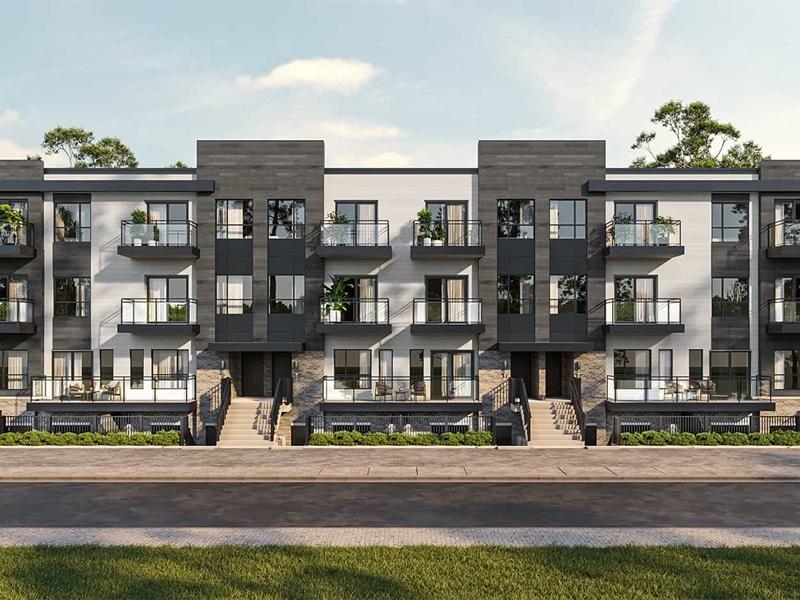
Housing starts will need to almost double from current outputs by 2035 for affordability to return to 2019 levels, a report by the Canada Mortgage and Housing Corporation (CMHC) says.
In its latest study titled Canada’s housing supply shortages: moving to a new framework, the Crown corporation projects between 430,000 and 480,000 new housing units must be constructed annually during the next decade to reach that target.
The pace will need to be particularly accelerated in Ontario outside of the Toronto area, Montreal, Ottawa-Gatineau, Nova Scotia and British Columbia excluding Vancouver.
The latest report updates the CMHC’s findings in 2023, when it suggested an additional 3.5 million housing units – on top of what was already being built – would be needed by 2030 to bring down prices to its definition of affordable housing. The 2023 study called for 5.8 million new homes during the 10-year period, whereas this report calls for up to 4.8 million as population growth has slowed.
A significant improvement in construction productivity will be key to reaching this latest projection. The report states 90,760 new homes had been started this year through the end of May.
"Doubling the pace of housing construction in Canada is achievable, but not without a significantly larger and modernized workforce, more private investment, less regulation, fewer delays, and lower development costs,” Aled ab Iorwerth, deputy chief economist for the CMHC, said in a release accompanying the report.
Where the current home start rate is taking Canada
The CMHC has changed its methodology for affordability. It now utilizes a homebuying affordability ratio as opposed to a metric that included criteria for qualifying for a mortgage, or comparing the monthly cost of purchasing an average home to the average or median income.
For the report, the aim was to get affordability to the point where the ratio was no higher than 30 per cent of average gross household income, or no higher than 2019 levels in the more unaffordable regions such as Toronto and Vancouver.
When modelling for the report, the CMHC considered the influences of population mobility and household formation as a new addition. Such factors will better accommodate for shifts, such as market dynamics if home prices were to fall in a city because of increased supply.
The "business-as-usual" scenario for homebuilding over the coming decade forecasts Canada’s population to reach almost 45 million and the economy to be more than 20 per cent larger. The CMHC projects the annual rate of housing starts will be approximately 245,000 units by 2035.
Housing stock would increase by about 2.75 million units to reach approximately 20 million units by the end of 2035.
The biggest upward shift in housing stock would affect Calgary - a 34 per cent increase. The smallest rise would impact Newfoundland and Labrador at 6.1 per cent. Overall, Canada’s housing stock climbs 16.2 per cent in this scenario.
At the current pace of housing starts, Canadians of 2035 will not see much relief in home prices. From Q3 2024 to Q4 2035, CMHC projects the average home price to rise from 13.5 per cent in Nova Scotia to as much as 62.6 per cent in Toronto. Under this model, the home price in Toronto would be just under $2 million; with Vancouver not far behind at $1.9 million.
The effect of doubling housing starts

To bring down prices to its standard for affordability, the CMHC said introducing more supply is crucial. In a scenario that would reach its affordability target, housing starts would need to average almost 480,000 units per year over the next decade.
Compared to the rate of housing starts today, the boost in construction would particularly impact the markets of Ontario outside Toronto (227.5 per cent), Montreal (209.9 per cent), and Ottawa-Gatineau (155.4 per cent).
The rest of Quebec, Edmonton, Newfoundland and Labrador, and New Brunswick showed no difference.
“In some areas of Canada, such as Edmonton, no additional supply of market housing is required, since these are projected to build sufficient housing to maintain affordability over the next decade,” the report explains.
If Canada does build housing at this higher pace, the average price from Q3 2024 to Q4 2035 would either decrease by as much as 20.6 per cent in Nova Scotia, or increase up to 29.4 per cent for Alberta outside of Calgary and Edmonton. Prices in Toronto would rise almost 20 per cent to $1.4 million and by 8.3 per cent to $1.6 million in Vancouver.
Looking at the possible effect of elevated construction productivity, the CMHC examined how innovations like automation and mass manufacturing could enable homebuilding to happen faster and more cheaply.
If productivity was stimulated by just 10 per cent, home prices in 2035 are projected to fall by two per cent and housing stock increase by one per cent; but a 31 per cent productivity boost (to match average productivity levels across all industries) would lead to a 5.7 per cent price drop and increase stock 2.9 per cent.
“Systemic changes are essential if we are to double the pace of homebuilding in Canada," ab Iorwerth said.










